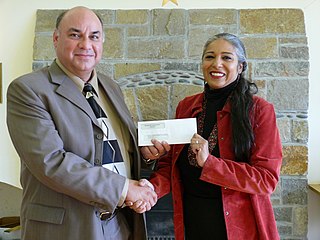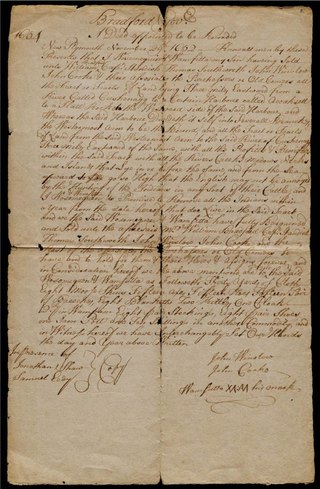Related Research Articles

Nantucket is an island about 30 miles (48 km) south from Cape Cod. Together with the small islands of Tuckernuck and Muskeget, it constitutes the Town and County of Nantucket, a combined county/town government in the state of Massachusetts, USA. Nantucket is the southeasternmost town in both Massachusetts and the New England region. The name "Nantucket" is adapted from similar Algonquian names for the island.

New Bedford is a city in Bristol County, Massachusetts, United States. It is located on the Acushnet River in what is known as the South Coast region. It is the largest city in the region and second largest city in the Providence-Warwick-New Bedford Metropolitan Region. Up through the 17th century, the area was the territory of the Wampanoag Indians. English colonists bought the land on which New Bedford would later be built from the Wampanoag in 1652, and the original colonial settlement that would later become the city was founded by English Quakers in the late 17th century. The town of New Bedford itself was officially incorporated in 1787.

The Wampanoag, also rendered Wôpanâak, are a Native American people of the Northeastern Woodlands currently based in southeastern Massachusetts and formerly parts of eastern Rhode Island. Their historical territory includes the islands of Martha's Vineyard and Nantucket.

The Massachusett language is an Algonquian language of the Algic language family that was formerly spoken by several peoples of eastern coastal and southeastern Massachusetts. In its revived form, it is spoken in four Wampanoag communities. The language is also known as Natick or Wôpanâak (Wampanoag), and historically as Pokanoket, Indian or Nonantum.
The North American Indian Center of Boston, Inc. (NAICOB) is a nonprofit organization located in Jamaica Plain, Massachusetts, a neighborhood of Boston, which provides assistance to American Indians, Native Canadians, Alaska Natives, Native Hawaiians, and other indigenous peoples of North America.
Lloyd "Sonny" Dove was an American professional basketball player. As a star at St. John's University in New York, in his last season of 1967, Dove won the Haggerty Award. That year he was part of the United States basketball team that won the gold medal at the Pan American Games in Winnipeg.

Marstons Mills is a village in the town of Barnstable, Massachusetts, United States. It is primarily residential, located on Massachusetts Route 28, and rural in nature. Main roads also include Massachusetts Route 149, Race Lane, River Road, Osterville-West Barnstable Road, and Santuit-Newtown Road.

Mildred "Millie" Noble was an American writer and Native American activist. Noble helped to found the Boston Indian Council, which is now known as the North American Indian Center of Boston.

The Avant House, also known as the Timothy Pocknet Homestead is an historic house on Massachusetts Route 130 at Mill Pond in Mashpee, Massachusetts. Built in the late 18th or early 19th century, it is one of the town's oldest surviving buildings. It is now owned and operated by the Mashpee Wampanoag tribe as the Mashpee Wampanoag Indian Museum. It was listed on the National Register of Historic Places in 1998.
The Mashpee Wampanoag Tribe is one of two federally recognized tribes of Wampanoag people in Massachusetts. Recognized in 2007, they are headquartered in Mashpee on Cape Cod. The other Wampanoag tribe is the Wampanoag Tribe of Gay Head (Aquinnah) on Martha's Vineyard.

The Wampanoag Tribe of Gay Head (Aquinnah) (Wampanoag: Âhqunah Wôpanâak) is a federally recognized tribe of Wampanoag people based in the town of Aquinnah on the southwest tip of Martha's Vineyard in Massachusetts, United States. The tribe hosts an annual Cranberry Day celebration.
Adrian Haynes was a chief of the Mashpee Wampanoag and a United States Navy veteran of World War II.
Watson F. Hammond was the first Native American to sit in the Great and General Court of Massachusetts.
Everett Gardiner Weeden Jr., or Tall Oak, was an artist, activist, survivalist, and historian of Indigenous peoples of the Northeastern Woodlands. The Mashpee Wampanoag Tribe stated that Weeden was "a documented descendant of the Mashantucket Pequot, Narragansett, and Wampanoag tribes".
Nelson Drue Simons (1885-1953) was a Mashpee Wampanoag Tribe chief from 1916 to 1928 and government official who was also the first known Native American graduate of Suffolk University Law School in Boston.
Lorenzo Tandy Hammond (1871-1959) was a Mashpee Wampanoag Tribe chief, plumber, and inventor.
Leroy C. Perry (1873–1960) was a Baptist minister from Rhode Island and Massachusetts who served as the first modern sachem of the Pocassett (Wampanoag) serving from 1928 to 1960.

Old Dartmouth was the first area of Southeastern Massachusetts settled by Europeans. It was purchased on behalf of the Plymouth Colony in 1652 from the indigenous Wampanoag people. The lands included all of modern-day Dartmouth, New Bedford, Westport, Fairhaven, and Acushnet in current day Massachusetts, as well as parts of modern Tiverton and Little Compton In Rhode Island, an area of around 145,000 individuals in the modern area.

Alexander Quapish, also known as Alexander Quabish, was a Wampanoag veteran of the American Revolution.
References
- ↑ Earl Mills, Talking With The Elders of Mashpee Memories of Earl H. Mills, Sr. (2012), pg. 57
- ↑ "New Bedford Whaling Museum Crew list". www.whalingmuseum.org.
- ↑ 1880 U.S. Census accessible on familysearch.org
- ↑ Mills at 57
- ↑ The Marston's Grist, Fall 2019, The newsletter of the Marstons Mills Historical Society
- ↑ Obituary in Hyannis Patriot, Jan.12, 1933; Front Page
- ↑ Mills at 57
- ↑ "Burden basket with burden strap/tumpline". National Museum of the American Indian .
- ↑ Earl Mills, Talking With The Elders of Mashpee Memories of Earl H. Mills, Sr. (2012), pg. 57
- ↑ Mashpee Town Cemetery records available on familysearch.org
- ↑ Earl Mills, Talking With The Elders of Mashpee Memories of Earl H. Mills, Sr. (2012), pg. 57
- ↑ Priscilla appeared in "People and How They Affected Me"